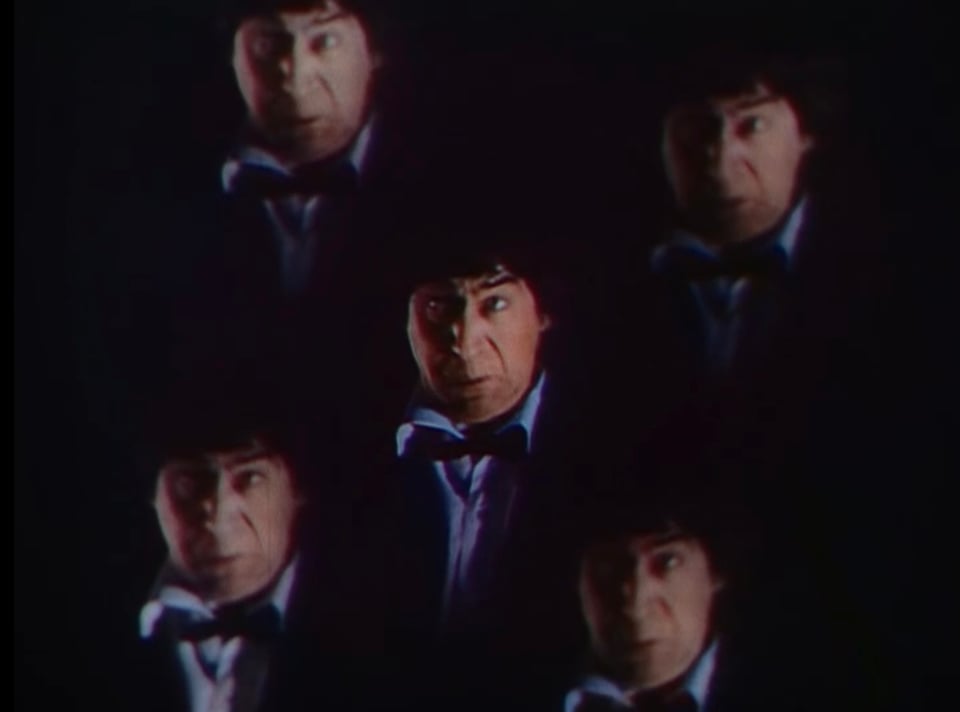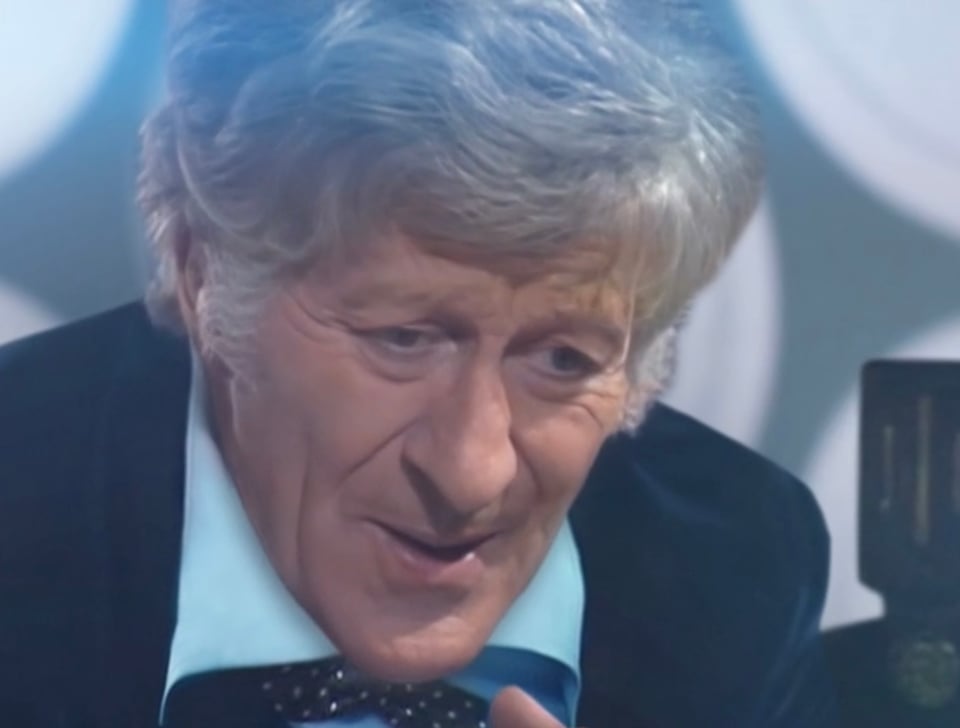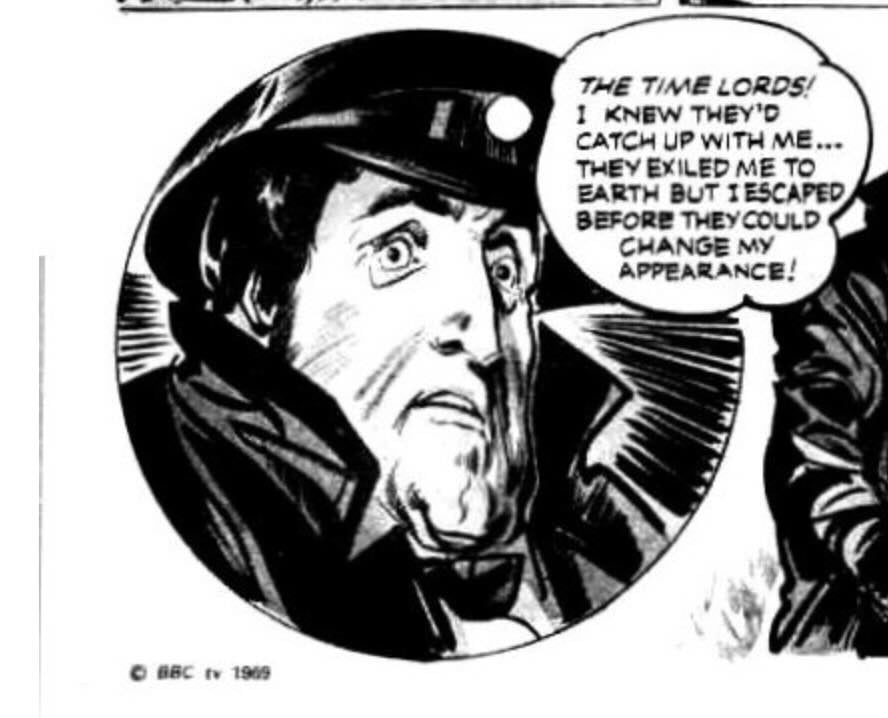"I'm in pieces, bits and pieces."
I’ve been luxuriating in “The War Games in Colour” a bit since Christmas. A favourite story in a new edition, skilfully cut down to TVM length, and coloured more effectively than I could ever have imagined possible. What’s more, some sections of this new version are even in genuine HD, due to the discovery of in-camera location film for some sequences during the compilation’s, er, compiling. Seriously, what’s not to love?
Yes, some people have quibbled with some decisions made by the production team, as we fans are wont1 to do, but it’s not like the original version has been wiped or thrown away or even made temporarily unavailable to make way for the new one. It’s on iplayer right now, where it’s literally more accessible than it’s ever been. Plus it will be included in the box when its younger, more colourful sibling arrives on Blu-ray2 in a few weeks’ time. That latter fact alone surely makes it more likely that someone drawn to the story by the free-to-air/stream 2024 version will sit down and work their way through all 240m of the 1969 one, rather than less?

I come through, not to praise or even justify The War Games in Colour, but rather to fixate obsessively on one particular bit. Because one of the most interesting and indeed exciting things about The War Games in Colour is the addition of a new sequence after the serial’s original final scenes (above); one which depicted Troughton’s Doctor regenerating into Pertwee’s, an event not seen on television at the time, not least because Pertwee was contracted to play Doctor Who on the 21st May 1969 while the studio pre-filming for the The War Games later episodes, including the beginning of the Doctor’s “change of appearance" had been shot on 3rd April, well over a month before. In 1969, time-wimey could only get you so far.
In 2024, however? Well. A little timey-wimpy goes a lot further, with nothing less than a new old piece of old new Doctor Who thanks to technology undreamt of when the serial was made, including the super clever use of altered shots from Inferno (1970) to give Jon Pertwee not just a new first scene as the Doctor, but new first words.

As someone who was surprised, on first seeing Spearhead from Space on VHS in 1988, that it did not begin with the trial scene from the book, this new section almost seemed to reinsert something I’d half-felt was missing for, gosh, thirty five years. To others, it’s the imposing ex post facto of something that didn’t and could never belong there. While my Mom (we watched the story as a family over Christmas) was surprised to discover that the scene hadn’t always have been there. She thought it had and that the special effects had merely been updated, like in the rest of the story. (She’s seen The War Games twice before, by the way, once in 1969 and once in 1990.)
There are of course continuity implications for doing something like this, and bigger ones than you might imagine, thanks to the large number of Doctor Who stories produced in media other than television. There’s a current, ongoing Big Finish audio series set after (what’s no longer) the final scene of The War Games, in which a Second Doctor played by Patrick Troughton’s son Michael is sent on missions by the Time Lords.
But then this isn’t a new idea. The “Season 6B theory” suggested by the influential Doctor Who - The Discontinuity Guide (1994) outlines a similar “missing era” of Doctor Who in part drawing on perceived continuity infractions in The Three Doctors (1972/3), The Five Doctors (1983) and The Two Doctors (1985). (The status quo of the last of these three is akin to that of the BF series.)
So persuasive was the argument that Terrance Dicks, who co-wrote The War Games, eventually went with the idea that because we don’t see Troughton’s Doctor turn into Pertwee onscreen, more adventures for him can be fitted in before the TARDIS crashes on Earth. Dicks’ novels Players (1999) and World Game (2005) are Troughton Doctor stories set after The War Games, as is his final ever Doctor Who fiction, Save Yourself, published posthumously in 2019.
But Dicks might not have needed much persuading. He had had a hand in approving numerous TV Comic strips for later 1969 which had also featured a likeness of Troughton’s Doctor in stories set after The War Games. But rather than running ops for the Time Lords, this TARDIS-less Time Lord was running away from them. Hiding on an Earth to which he had been successfully exiled, but without having his face rearranged.

These stories all contradict each other as well as contradicting The War Games in Colour and indeed The War Games itself. There are even contradictions between at least two of Terrance Dicks’ own accounts, with Players not quite fitting with World Game and Save Yourself not necessarily following on from either. Can we make them all fit? Do we want to? Or does The War Games in Colour, by virtue of being a television episode, trump3 them all?
Even if it does, the desire to make any or all Doctor Who fit together is a powerful fannish impulse from which very few of us are immune - and I am certainly not lucky enough to be one of them. By which I mean us. (Although I am a big fan of Steven Moffat’s dictum that in a programme with time travel and parallel universes there actually can’t be continuity errors, only things that look like them.)
So, perhaps we can turn to another recent Doctor Who innovation for a kind of answer. The Giggle (2023) introduced the concept of “bi-generation”, where a Time Lord splits in two when regenerating rather simply changing their face. Although explicitly something which “has never happened before”, show runner and The Giggle author Russell T Davies later suggested that this “first” occasion had an effect on the Doctor’s past, and created the older fifth, sixth and seventh Doctors seen in the Tales of the TARDIS miniseries.
So if the effects of that momentous change are echoing down the timeline and into the Doctor’s past, maybe all that contradictory spin-offery is equally real?4 Because, what actually happens on screen before the newly colourised Doctor ends up seated in the TARDIS on his way to 1970/80? It’s at the top of this post. He’s splitting not just in two, but into multiple pieces. If the Doctor at the point of regeneration can split instead into new and old selves, why not new and multiple old selves?
Maybe one of those Doctors is the CIA-run Doctor of the BBC Books and another starts regenerating and then stops, ending up as Michael Troughton, in the same way that the Doctor of Twice Upon A Time (2017) has, mid-regeneration between Hartnell and Troughton, ended up as David Bradley5. Another one has gone off to be in TV Comic and the other other other one gets involved with a different agency before having to regenerate into Jo Martin. Why not? There is, as Russell T Davies has said, a “Doctorverse” now. A whole practice of possibilities.6
While that idea may seem like a format-stretching, continuity ramraiding, ultimately unacceptable innovation to some, it’s also absolutely inevitable that some people felt the same way about the original version of this story’s introduction of the Time Lords, let alone their hobbling of the TARDIS and exiling the Doctor to Earth in the first place. In 1969 that was heresy, now it is holy writ. But long running fictions, like life, depend upon change, and renewal.
The BBC do need to amend and reissue the Third Doctor commemorative “First / Last Words” mug though. That’s a given. I need a new one anyway.

Me? I’m personally not keen on the music cue driven implication that the War Chief is the Master, as they strike me as very different people even allowing for regeneration. While Terrance Dicks, who co-created both characters, firmly established them as separate in his novel Timewyrm: Exodus. I don’t think it requires a deep belief in authorial intent to think that should be respected. But equally, mine is just one view of many. ↩
For clarity, I make absolutely no money from links like this and wouldn’t know how to if I wanted to. They’re just there for your information. ↩
Ugh. Trump. ↩
Spoiler: It is, in so much as it is all made up. No, really. ↩
This is what’s happened according to dialogue in the actual story. I laughed out loud. With pleasure, obviously. ↩
A practice is the collective noun for Doctors, right? ↩